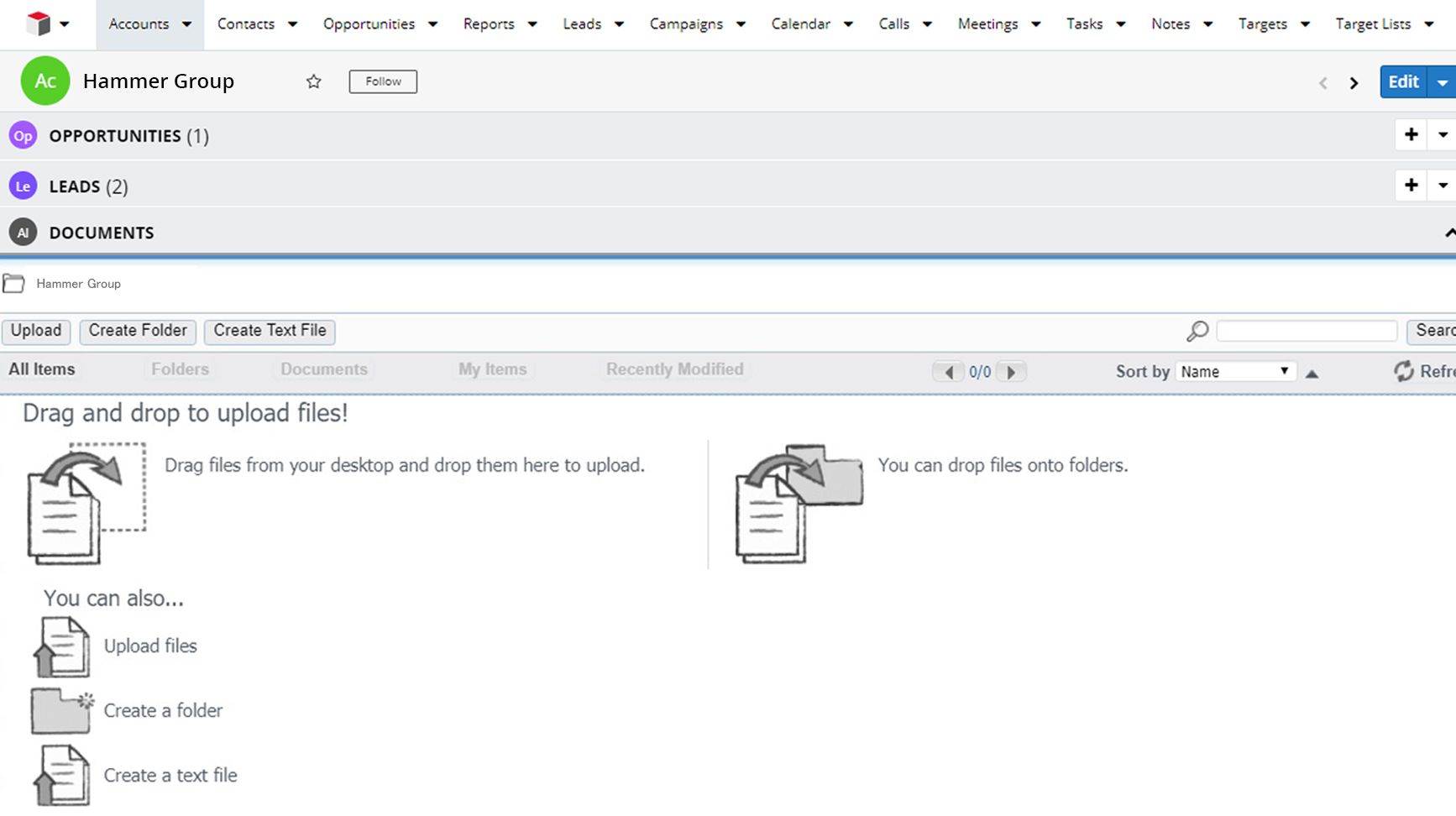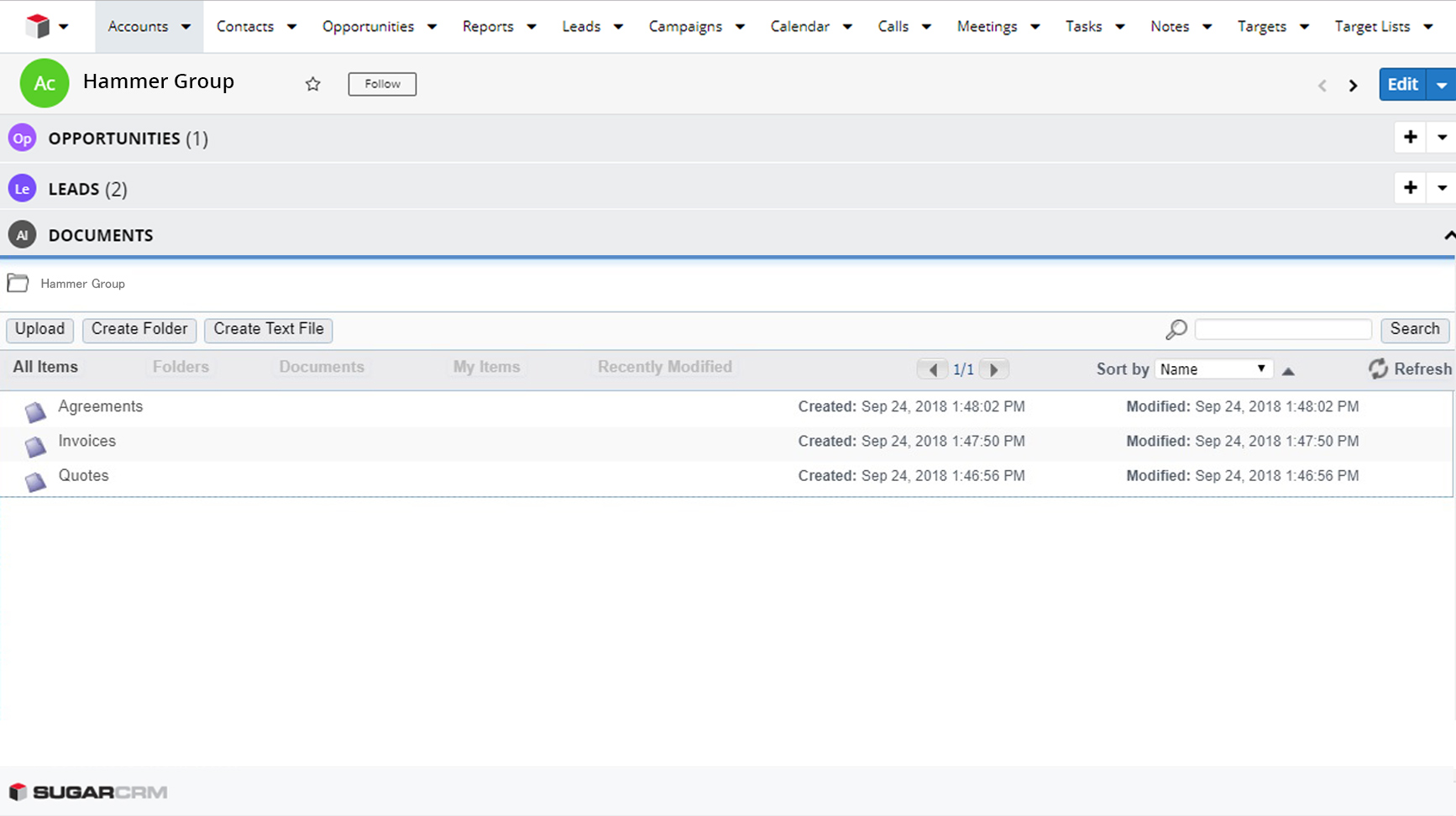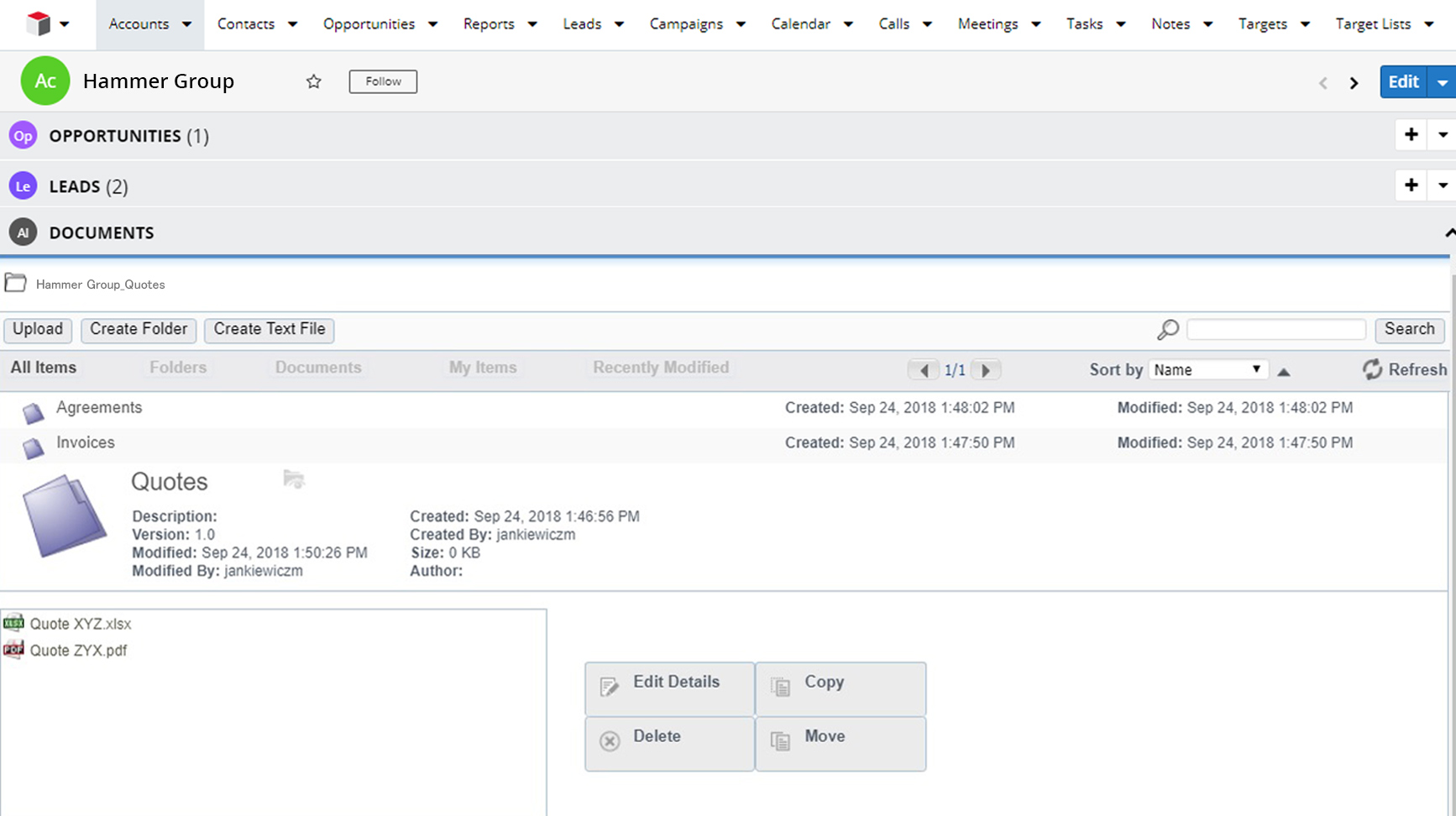Sugar/SuiteCRM Alfresco Integrator
Sugar and SuiteCRM are both a Customer Relationship Management software (CRM). Their functionalities include sales force automation, marketing campaigns, customer support, mobile CRM, social CRM, reporting etc. Alfresco is a highly advanced Enterprise Content Management software (ECM), which allows for the administration of files. It is mostly used as a repository of digital documents, emails etc.
Thanks to the Sugar/SuiteCRM & Alfresco connector the user gets easy access to all the information collected by both systems. Try it for FREE!
The integration covers following areas:
- the CRM user gets access to the files saved in Alfresco and associated with a given record (for ex. a Lead) without the need of jumping between two systems;
- folders for a particular path are created automatically;
- documents display in a separate sub-panel inside a relevant record in CRM;
the integration allows restricting permissions in relation to the Alfresco paths (which supports the order and proper organization of the catalogs).

Before use, the Sugar/SuiteCRM Alfresco Integrator has to be configured by the CRM administrator.
Administrator creates accounts in CRM in the “Manage Alfresco users” section. After that, accordingly to individual preferences, the users can configure them on their own (external accounts). To browse the repository via Documents sub-panel, CRM users must have an active Alfresco account. The CRM user and the Alfresco user are connected through a simple mapping mechanism. There is an option to manage the user accounts from the CRM administration panel and appoint which login equals which. It is also possible to create a new Alfresco user directly from the CRM. If there is a user in Alfresco with the same login in CRM, the integrator will notify about this in the administration panel and suggest the mapping of the two.
The integration guarantees that only users with the right permissions see certain Alfresco sites, therefore also a document placed there.
After a successful setup, it is possible to browse files associated with a given record directly from the record view in the Documents sub-panel. This section of the software is filled by a widget, which allows searching through the repository without leaving the CRM. Depending on the type of the project, users can have viewing or editing rights. At the top of the Documents sub-panel, our developers put a breadcrumbs navigation and a search function to easily navigate through the project. New folders and files can be created by clicking on dedicated buttons. You can either download or preview the files directly in the sub-panel. They can also be copied and moved from one folder to another. It is possible to store different versions of the file as well.

The so-called Alfresco paths should be set separately for each folder in the repository. Furthermore, the automatically created folders entirely comply with the logic of the CRM modules.
There are two kinds of folders which build an Alfresco path: - CANNOT upload files; - CAN upload files.
The first kind helps to build the structure of a path. The second is the place where a file can be dropped. It may seem like an unnecessary feature but it actually helps to keep the system in order.
The integration guarantees that only users with the right permissions see certain Alfresco sites, therefore also a document placed there.
The connector includes a mechanism that rules out the possibility of creating duplicates. In order to differentiate the catalogs, in case a given folder already exists, the connector adds a number (after the underscore: _n) to the appropriate Alfresco path. The name gets updated every time someone affects the path (for example by changing the name of an Opportunity record). In addition to creation of separate folders for each record, there is a possibility of designing a shared directory for a group of records that fit the same operational description.

Supported versions:
Sugar: 8.0.x and up or SuiteCRM: 7.10.x and up Alfresco CE 6.0.7




